#Jim Rome
Explore tagged Tumblr posts
Text
17 notes
·
View notes
Text

28 years ago today Space Jam released in theaters!!!
When I was a kid & first saw this movie it blew my mind!! I was a huge Micheal Jordan fan & of course loved Looney Tunes!! It was actually the first time I saw so many athletes acting in one movie! Every time I watch this movie it fells like I’m watching for the first time all over again!!! I had the VHS tape too!!! 📼📼📼I’m glad I gave to charity!!! Their faces!!!😆🥰😆
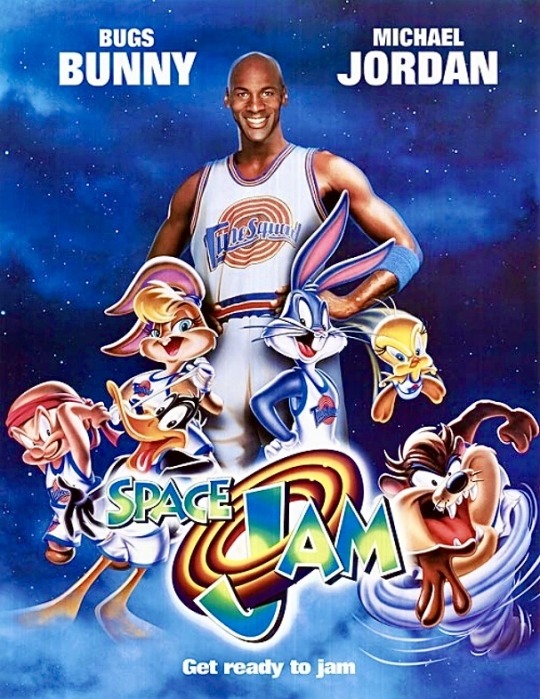


#space jam#micheal jordan#bugs bunny#looney tunes#Joe Pytka#Leo Benvenuti#Steve Rudnick#Timothy Harris#Herschel Weingrod#Ivan Reitman#Joe Medjuck#Daniel Goldberg#Michael Chapman#Sheldon Kahn#James Newton Howard#Billy West#Wayne Knight#Theresa Randle#Danny DeVito#Bill Murray#Larry Bird#Patrick Ewing#Larry Johnson#Danny Ainge#Vlad Divac#Ahmad Rashad#Jim Rome#Charles Barkley
1 note
·
View note
Text
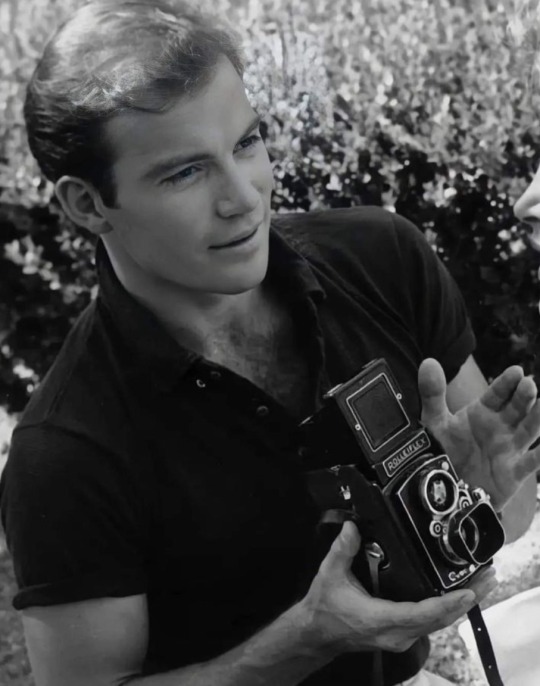
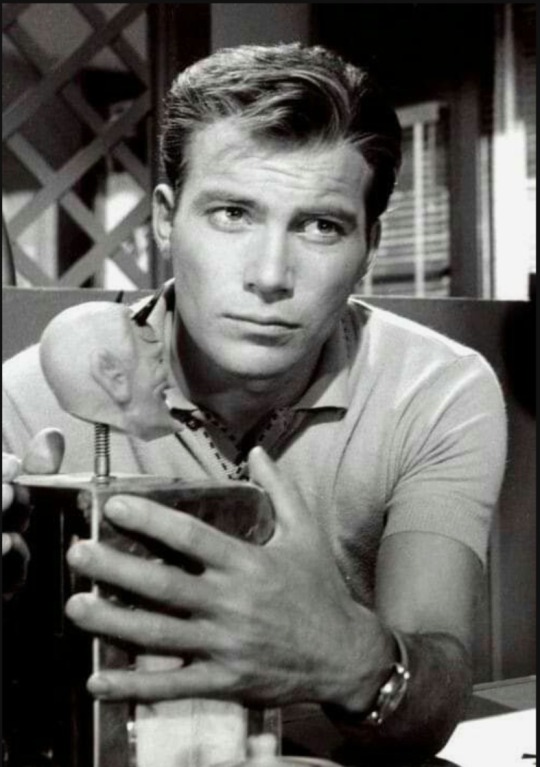


omg????? (I found these on pinterest but omg?????)
#side note- why does nimoy look like louis tomlinson in the second pic#in other pictures he kinda reminds me of david schwimmer tho#and there's shatner#in rome we say che je voi dì#god he was pretty#star trek tos#jim kirk#spock#william shatner#leonard nimoy
178 notes
·
View notes
Text
i feel like i should have an ancient rome tag. i feel like its got to the point where i really ought to have an ancient rome tag
#🧍♂️ guy whos allergic to tagging things#to be fair i have tags for bat out of hell and jim steinman and john donne so i dont see why having a rome tag would be impossible its just#a hassle#pip squeaks
3 notes
·
View notes
Text
Okay, so, I have an answer to this. I'd time travel to Miami Beach.
That will make no sense unless you understand one of my formative memories of childhood. When I was young and hanging out with my dad, we listened to a lot of The Jim Rome Show, an AM sportstalk show. At one point they interviewed someone, I believe a football player, and they asked him the inevitable question: "If you had a time machine, where would you go". For some reason, this guy answered "Miami Beach, Florida". For a solid *Six Months* Jim Rome would drag this guy by making references to time travelling to "Miami Beach, Florida, Present Day", IIRC complete with B-movie style sound effects.
Ever since then, every time someone asks me "If you had a time machine where would you go" I instantly answer Miami Beach.
Time travel poll but all the options are things I personally want to do
#this must have been about 2006 or 2007#I wish I could find that episode again#wulf's wafflings#jim rome show
6K notes
·
View notes
Text
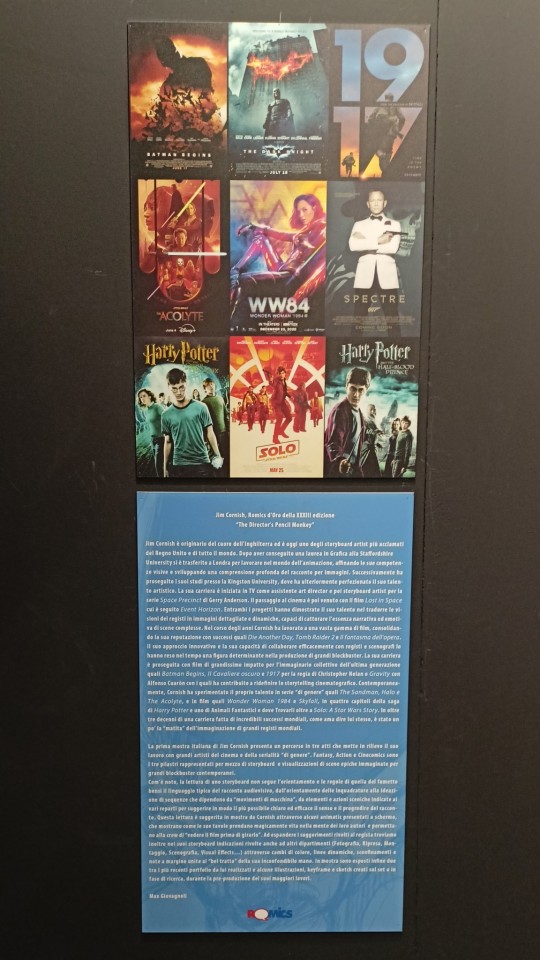
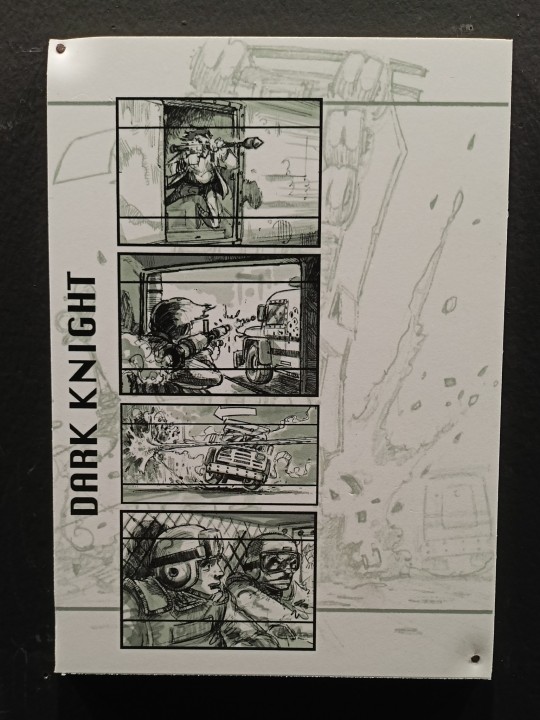
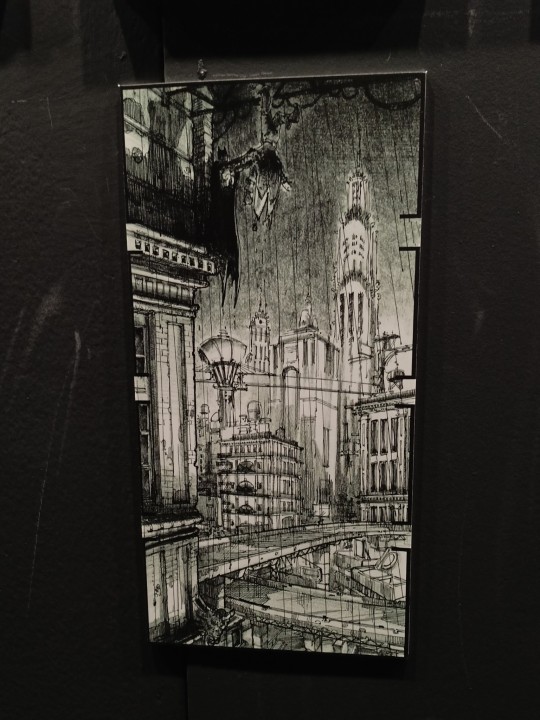
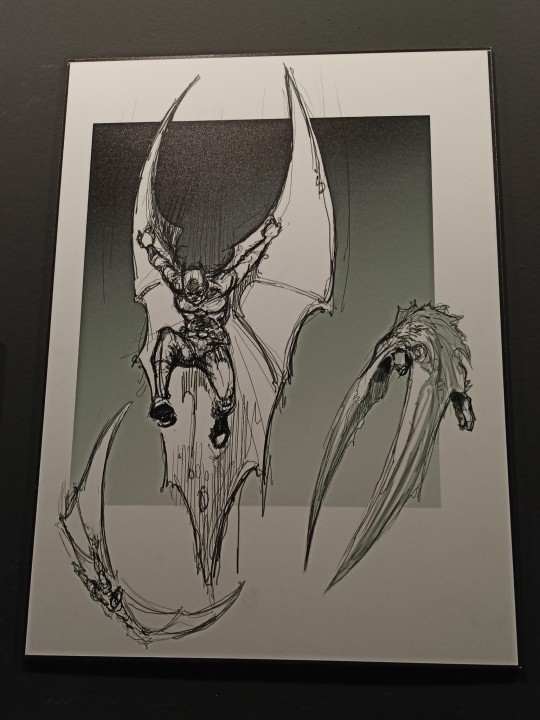

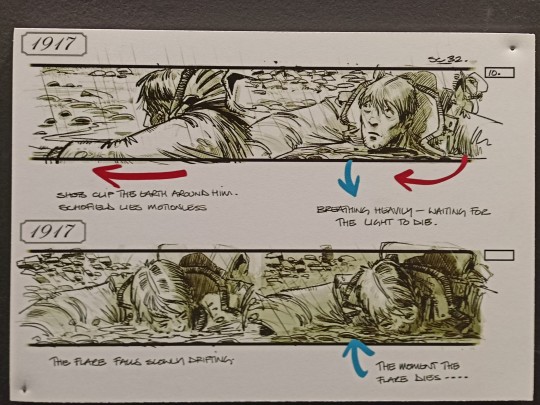
06.10.2024
0 notes
Text
UK Lebanon appeal gathers momentum

We'd like to give a huge thanks to everyone who has helped raise £237.00 so far, to support Aid to the Church in Need and their work across the Middle East.
In Lebanon, the Sisters of Our Lady of Good Service have opened their convent to provide refuge to hundreds fleeing intense bombing.
But as winter approaches, the challenges grow—keeping everyone warm, safe, and cared for, in this place where both Christians and Muslims can find peace.
Please help us, to help them!
#manchester#lebanon#fundraiser#london#liverpool#uk#catholic#christian blog#jesus#jim caviezel#vatican news#pope francis#germany#austria#europe#islam#islamicquotes#book quotes#usa#paris#france#italy#rome
0 notes
Text
Curse Of The Faceless Man | Episode 379
New Post has been published on http://esonetwork.com/curse-of-the-faceless-man/
Curse Of The Faceless Man | Episode 379
Jim discusses a cult classic from 1958- Edward L. Cahn’s “Curse Of The facelss Man,” starring Richard Anderson, Elaine edwards, Adele Mara, Luis Van Rooten, Felix Locher,Gar Moore, Jan Arvan and written by Jerome Bixby. An ancient gladiator who was killed in Pompey during the eruption of Mt. Vesuvius in 79 A.D. comes to life and seeks his long-lost love. Find out more on this episode of MONSTER ATTACK!, The Podcast Dedicated To Old Monster Movies.
#1958 Monster Movie#Adele Mara#Ancient Rome film#Curse Of The facelss Man#Destruction of Pompey#Edward L. Cahn#Elaine edwards#Felix Locher#Gar Moore#geek podcast#Jan Arvan#Jerome Bixby#Jim Adams#Luis Van Rooten#Monster Attack!#nerd podcast#Old Monster Movie#Richard Anderson#The ESO Network
0 notes
Text

Audrey Hepburn at the Hassler Hotel Rome. Photography by Jim Pringle January 8, 1960
#audrey hepburn#1960s#old hollywood glamour#old hollywood#fashion#classic#vintage#photography#style#1960
42 notes
·
View notes
Text

🗡️🗡️🗡️🗡️🗡️
Joyous Ides of March to all the backstabbers out there.
#ides of march#julius caesar#caesar#ancient rome#brutus#history#tumblr holidays#🗡️🗡️🗡️#🗡️bestie🗡️#🗡️sherlock🗡️#🗡️sherlock roleplay🗡️#sherlock roleplay#jm#jim moriarty#🗡️soon🗡️#daddys gay boy#by sherlock's own request
157 notes
·
View notes
Text
Just saw a super weird post complaining about how when people thing of fascism, they think of European facism and the Holocaust and not the Jim Crow south, and that’s proof that Jews are privileged over Black people in our collective consciousness?
Anyway two things:
No one will ever win the oppression Olympics. We all lose. Stop playing.
Have you considered that facism is associated with Europe because it arose as a political movement in the 20s and 30s in Europe?
Benito Mussolini founded his Partito Nazionale Fascista in 1919. He was appointed prime minister following the infamous March on Rome and then abolished the democratic system.
Jim Crow laws emerged right after Reconstruction. They were a means of institutionalized bigotry that predated the concept of fascism by several decades.
44 notes
·
View notes
Text
everything i’ve found out about this album cycle ig?
an amount of information below (Papa V and Ghoul designs, SATANIZED, and New Album)
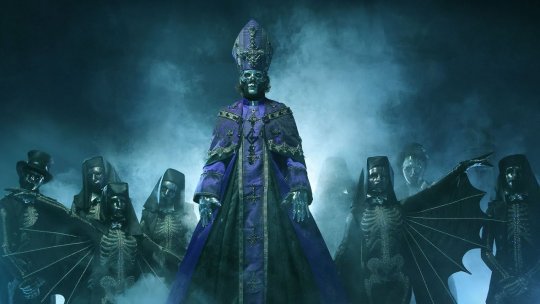
alright, Papa V! and the ghoul(ette)s look great! It’s giving more nun for the ghoulettes, not sure what the ghouls remind me of.
next is the SATANIZED music video. I can’t say much about how good it is, or if it feels like Ghost because I don’t have that qualifications.
youtube
The music video basically has a dude confessing, then the priest (not jim ): ) prescribes him with Corinthians 6:19. That verse is “Do you not know that your bodies are templesof the Holy Spirit, who is in you, whom you have received from God? You are not your own;” (This is probably different through different bibles! I just used google) Something happens and he gets exorcised I think? And then he becomes Papa V? I’m unsure about that part.
Next is the actual album of the name Skeletá! It is set 50ish days from now on April 25 (PST!). Song titles as followed:
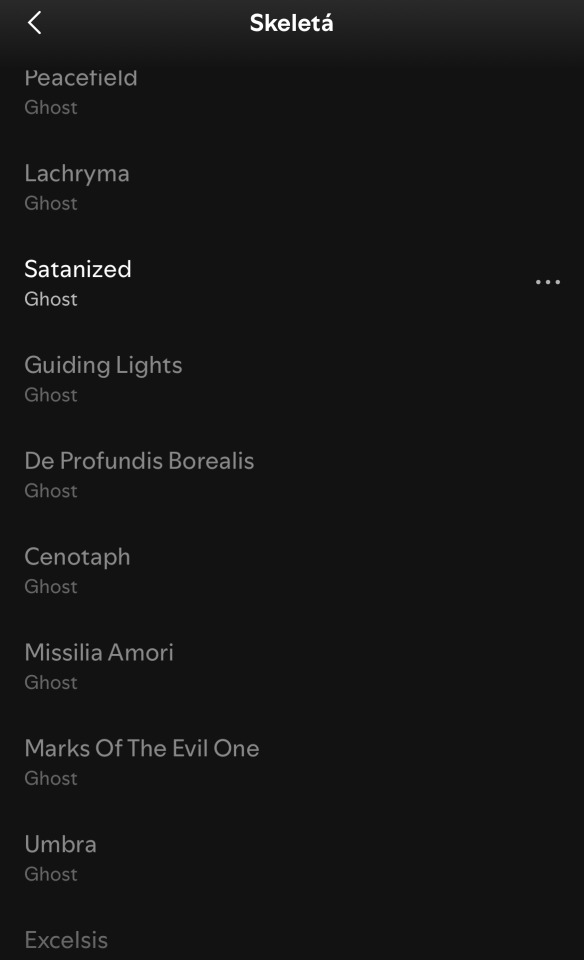
and here’s the album cover that I screenshotted, you’ll find higher quality elsewhere
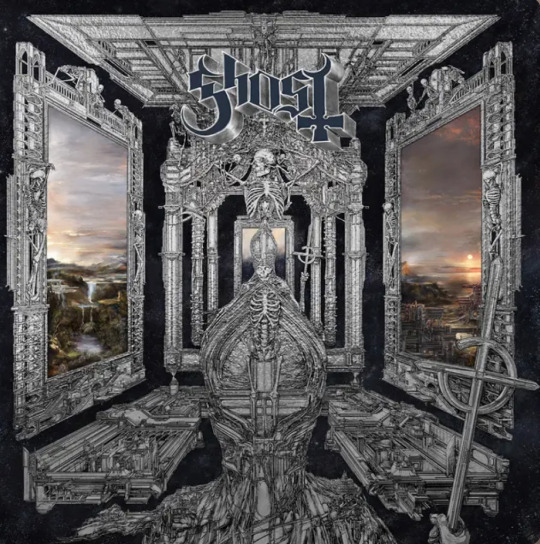
Nothing significant I have seen is on the 25th. William Shakespeare was baptised on the 26th though? I guess??
Rough Translations where i just give you information!
Lachryma: Related to words like tears and weeping
De Profundis Borealis: “De Profundis” is a poem which “describes a speaker's longing for the joy and beauty of heaven and the impossibility of reaching it during one's lifetime.” combined with “Borealis” meaning “north” you get… something.
Cenotaph: Not a translation but means “a monument, sometimes in the form of a tomb, to a person or group of persons buried elsewhere.”
Missila Amori: “Missila” is “a gift of money that was thrown by wealthy individuals, praetors, or consuls to people on the street in ancient Rome. It was a way of showing generosity and largesse to the public.” and “Amori” is well… “to love”
alright have fun guys!!!
#ghost the band#the band ghost#ghost band#papa v perpetua#papa v#papa perpetua#ghost bc#mythwrite#mythrite music
41 notes
·
View notes
Text
Between Daylight and Darkness
Chapter 10
<Previous Next>
Ao3
Barbara shifted onto her other foot, there was a dented beer can to her right and a crumbled up fast food wrapper to her left. Lit under the sickly yellow glow of streetlights, natural light faded near to nothing, the sun having set twenty minutes ago.
“Are you kids sure this is the right spot?”
“Yep,” Toby grinned at her, stepping up to pat the concrete wall ahead of them “This is the place. Behind this wall lies a world of magic and wonder beyond your wildest dreams,”
A truck rumbled the bridge overhead, Barbara bit her lip, keenly aware of Toby ahead of her and Jim and the girls behind her, and tried not to look as skeptical as she felt.
It wasn’t as if she doubted the kids, not at all, she knew they were all being very sincere. It was just that their story was a bit…unbelievable now that she was actually here standing under the bridge in front of a concrete wall surrounded by rubble and litter. But given the things she'd lived with over the last decade she of all people should keep an open mind.
“Oh! There is one more thing you should know,”
She turned towards Jim “What is it?”
He gave her an awkward smile, tusks on full display, ompletely covered in shining silver armor from the neck down. She'd asked about his choice to go down wearing something so...conspicuous, but he'd brushed her off with a quick 'when in Rome'. This didn't strike her as the full truth, but it was neither the time nor the place to push it.
“Well you see...when it comes to…trolls, I’m uh…I’m one of the little guys,”
She looked up at him with a start. Little guys? What did he mean by–
A soft crackling pulled her attention back to the wall, a glowing arch appearing in the concrete right before her eyes, blasting away all her doubts. The gray stone crumbled away from the blue arc, creating an entrance where none existed before, falling back to reveal–
Barbara staggered back on reflex, a scream rose up in the back of her throat, though thankfully she stopped herself before it could escape. But a large part of her still itched to run as fast and far as she could.
A massive creature– a troll, stepped through the arch. He had had horns and stony skin just like Jim, but that was were the similarities ended. This creature lumbered forward leaning on his hands like a gorilla, powerful arms wide as tree trunks. He had to be nine- ten feet tall standing upright. As it was he towered over all of them, Jim included. The troll wore no clothes but had a massive, mossy mane running down his back, growing into his beard and covering his chest as well. Ears were long and floppy, a dark snout with vertical slit nostrils in place of his nose. But despite his...disconcerting size, the troll's expression was gentle. Green eyes radiating calm as he stepped clear of the arch, bending his arms to lean down to look at them something closer to eye to eye.
“Welcome back,” he rumbled in a low, gravely voice.
Toby stepped up to the troll without hesitation, giving Barbara heart palpitations “Good to be back big guy,”
Meanwhile Barbara was still trying to figure out how to make her voice work, neck craning from looking up at the troll. Who it should be noted, was bending down.
So this was what Jim meant by ‘little guy’.
“Mom?” a gentle tap on her shoulder pulled her back down to earth “You ok?”
“Y– yes I’m fine,”
The big troll let out a rumble, turning and inclining his head towards the still glowing archway “Come, AAARRRGGHH will show,”
Still reeling, and trying to get her heart rate back into the resting range, Barbara let out a small cough to get the troll's attention “Umm… sorry but what’s an Arrrgh?”
The troll raised a finger to point towards himself “AAARRRGGHH is AAARRRGGHH,”
So it looked like this…troll’s name was AAARRRGGHH, that made as much sense as everything else.
“Well thanks for the showing us the way AAARRRGGHH,” Darci strolled into the cave like this was entirely normal, the others following after a few moments later.
Barbara swallowed hard, fought back thousands of years of instinct in the back of her mind screaming at her to take the kids and flee far away from stone creatures and dark caves back to where there was light and crowds, and picked up her feet, following them into the unknown. She couldn't quite smother the flinch when the cave door reassembled behind her, sealing the exit.
Oh god what was she doing, there was no way out and no one knew where they were. She was one woman alone against an unfathomable number of trolls, and from the look of them one would be enough to overpower her with no effort at all. She needed to get out now, grab the kids, find the nearest exit, run before--
Barbara stopped in her tracks, netting her hands together and pressing them over her stomach, forcing her breathing to stay even. She ran through the various symptoms and stages of organ failure in her head until her breath was under control. Her heart was still speeding but it was no longer galloping. Her moment of panic had been brief enough the others hadn't noticed, trailing only a few feet behind them.
She needed to focus, even if her panic was justified this was the absolute last place to lose her head. And she shouldn't let her preconceived biases color her perception. The...people here had helped the kids, given them shelter and protected them from the troll that had tried to harm them.
So they were gigantic and made of rock, so what? Jim was the same and he was one of the sweetest, most harmless people she knew. Heck, for all she knew trolls considered them scary.
Uh oh, she'd fallen too far behind. A large gap had formed between her and the rest of the group, Jim had stopped and turned and was staring after her concerned, Darci had noticed and was now doing the same. It was only a matter of time until the rest of the kids took notice of her hesitation, then AAARRRGGHH surely would.
Barbara flashed Jim the most reassuring smile she could manage and hurried to catch up with them. Jim and Darci didn't quite look convinced, but they turned back and kept moving. The seven of them heading deeper into the earth.
But even though they were underground it wasn’t dark, a cool blue glow came from ahead. Following AAARRRGGHH they approached the source of the light. A glowing crystal staircase carved into the bedrock leading down into depths unknown.
Barbara was not thrilled at the idea of going even deeper underground than they already were, but AAARRRGGHH had already started to descend, the kids right behind him. And with how steep the stairs were if she didn’t close the distance between them now she’d end up falling behind.
And as much as she did not want to go down there, the thought of abandoning the kids to the unknown was even less appealing.
Acutely aware of the pounding of her heart, Barbara took a deep breath, then lowered her foot to the first step.
The descent wasn’t an easy one, the stairs were steep and so far apart she had to tread carefully to avoid slipping and twisting a leg. They were clearly made with larger creatures in mind. And now matter which angle she twisted and peeked at, she couldn't see how far down they went.
She snuck another glance at AAARRRGGHH, who was traversing the stairs with no trouble. Only this time she noticed something she'd overlooked before. AAARRRGGHH's feet and legs were tiny. Both compared to her own and in proportion with the rest of his body. From head to toe his legs only made up one third of his body length, maybe less. Compared to his arms they were even tinier. His feet were an unusual shape to, small and rounded with only three visible toes.
This made sense with his gorilla-like gait and posture, but it was a radical difference from Jim's own anatomy. While Jim did have the horns, tusks, and stone skin this other troll did, his proportions were human, or at least similar enough that Barbara had never noticed a difference.
Come to think of it there were other differences, AAARRRGGHH's ears, the shape and placement of his...snout she supposed, the markings on his chest and arms, she hadn't been able to get a good look at his hands but AAARRRGGHH's seemed to have fewer fingers. And it was stumpy but he had a small tail as well.
Jim was human shaped with stone skin, horns, and tusks. But AAARRRGGHH was something else entirely. Was Jim's shape the 'norm' for trolls or was AAARRRGGHH's? Or were trolls so varied in their body types that they didn't have a norm as she would understand it?
Barbara was so caught up in speculative anatomy that it came as a surprise when they reached the bottom of the stairs, a large arch ahead of them with more light pouring in.
AAARRRGGHH’s silhouette blocked off most of the entryway, preventing her from seeing what lay ahead “Stay close,” he rumbled, heading through into the beyond.
She and the kids stepped after him, trading a narrow stone cavern for a much more open space. Barbara blinking in the sudden brightness, as her vision cleared shock slowed her footsteps, until Barbara was standing there frozen, gaping at the sight unfolding in front of her.
When the kids had told her about an underground city the first image that popped into her mind was of homeless encampments in abandoned subway tunnels that she remembered watching on the news as a kid. Given that they’d also said it was a ‘magical’ underground city, she knew the reality was probably a bit more polished than her knee jerk impression.
But nothing her imagination could have dreamed up could have ever prepared her for what laid ahead of her.
They were standing in an absolutely massive cavern, so large that she felt a little exposed despite being underground, an entire metropolis sprawled out before them. The city had been carved and built from the bedrock of the cavern itself. Stone dwellings stacked up in hive like clusters of varying sizes, some clinging to the the sides of the cavern wall itself, only discernible by the glow of their windows in the distance. The entire cavern was alight with color, blue and purple crystals clinging to the walls and scattered between buildings, filling the space with cool light. Smaller, paler crystals stood atop narrow stone columns and tucked into the corners of buildings like crystalline streetlights. Which was probably exactly what they were. Rock and crystal where overwhelmingly dominant, but a second glance revealed pops of fabric and wood. A wheelbarrow, a purple tent, stacks of baskets and multicolored awnings. A rainbow of colors scattered across gray stone.
But what took her breath away was the people.
Dozens of them, maybe hundreds, more than she could count, milling in and around the carved out buildings and through the stone cobbled streets. Stone skin of various colors. Some built thick and stocky, others wiry and slender. Horns of all shapes and sizes, some even in clusters of two or three. One eye, two or three, extra limbs and digitigrade legs. Clothing was varied, some were as naked as AAARRRGGHH, some wore kilts with no shirt, some wore shirts with no pants. And while most of them were certainly bigger than Jim she was relieved to see that AAARRRGGHH seemed to be as big as they got. No two were the same, but each and every one of them was like Jim–
Barbara couldn't move, standing there absolutely stupefied, her heartbeat high and fluttering as she gazed out at the vast city before her.
This...all of this was right beneath their feet for the past ten years, this whole time...
A hand on her shoulder snapped her out of it.
“You doing ok I know all this...." Jim stretched out an arm and gestured towards the mystical stone metropolis in front of them "Can be…a lot,”
Barbara recovered and laid her hand over Jim's, squeezing his armored fingers while glancing up at him with a smile “It is...quite an adjustment, but I'm ok, let’s keep going,”
AAARRRGGHH led them down one of the narrow streets winding between the buildings, trading open space for a crowded corridor. Shops and stalls lined either side of them, positively bustling with activity. One troll dumped a cartful of light bulbs into another's barrel, another ladled out bowlfuls of a thick steaming steaming something to the trolls who were lined up in front of a massive cauldron, two trolls shouting at each other in a guttural language that was certainly not english, the subject of the argument appeared to be an old staticy television of all things tucked under one of the pair's arms, off to the side in one booth a troll leaned over a seated troll with-- Wait was that a chisel?
Apparently the markings on AAARRRGGHH's chest and arms weren't a natural pattern.
There was so much going on, so many different sights and sounds and smells. Despite knowing how decidedly not safe it would be to do so, part of Barbara itched to break off from the group, explore all the new, fascinating things around them.
A quick glance at the kids ahead of her told her they were feeling the same way. They were all glancing around with stars in their eyes, darting this way and that to get a closer look at whatever had grabbed their attention.
"What kind of skulls are those!"
"Hang on I think there's an apothecary over there--"
"Have you guys seen this embroidery!" Mary's phone was in her hand taking a near constant stream of photos.
"Can I live down here I totally want to live down here..."
Without even realizing it they were drifting farther and farther away from each other, a space growing between them and AAARRRGGHH as they fell behind. And their heads weren't the only ones turning...
The troll by the cauldron had dropped his ladle and was gaping at them in wide eyed shock, the troll being chiseled grabbed the chiseler's arm, pointing at their group while letting off a rapid fire of that same guttural speech. The two trolls who had been arguing over the tv stopped shouting to turn and stare, both their faces twisted with matching expressions of rage--
The observation sobered her in an instant, Barbara was suddenly very keenly aware of the growing distance between each of them and their escort. She quickly rushed forward and grasped Claire by the elbow, gently but firmly pulling her away from the table full of crystal carvings and back towards the center of the street.
"Come on kids let's try to stay together, we've got a schedule to keep,"
She strode over and reached up to grab Jim by the shoulder from where he was staring at the chiseler's booth.
"That means you to kiddo,"
Jim grinned sheepishly and followed her back towards the center of the street "Right, sorry,"
Barbara quickly corralled the others, Toby grumbled a little bit but Mary was easy because she was to busy taking pictures to protest, Claire having herded Darci back in while she was busy with the others. Once all six of them were gathered together again Barbara hurried them along as urgently as she could without slipping into outright panic, making a concerted goal to keep all the kids close and close the gap between them and AAARRRGGHH.
Only when AAARRRGGHH was a mere six feet ahead of them did Barbara risk a glance at the trolls around them.
They were still turning more than a few heads, but fortunately the predominant emotion seemed to be abject shock instead of hostility.
Still not ideal but Barbara would take what she could get.
Eventually their street opened up into a wide courtyard, ahead of them was a set of steps leading up to a larger cave dwelling, stepping off the street and into the building, following AAARRRGGHH down a narrow hall lit with small orange crystals embedded in the stone.
They followed him through narrow twists and turns until they reached a room that was entirely made of the same orange crystal as the hallway lamps. It wasn't as impressive as the view of the cityscape, but it still took Barbara's breath away. The entire space seemed to glow with the warm light of the crystals surrounding them, giving the room a cozy atmosphere. Still, as comfortable as it looked she couldn't afford to get swept up and drop her guard.
She adjusted her glasses and flicked her gaze from side to side, surveying the large room. Barbara's best guess was that this space was some sort of workshop. There were a few desks and what appeared to be workbenches scattered about, their surfaces littered with tools ranging from recognizable to completely foreign.
But most importantly, the room was occupied.
Standing at the largest table were two trolls, a smaller blue one with six eyes and four arms, this must have been Blinky, and a taller pale one. Both of them turning and standing at attention at their arrival.
Barbara wasn’t quite sure how trolls aged, she lacked the context and the wide field of background knowledge to make any conclusions about the ages of any trolls she saw. But if she had to hazard a guess she'd say the troll next to Blinky was an older one. His mane and beard were snow white and hung nearly all the way down to his kilt; large, twisting horns grew out of either side of his head, larger than both Jim's and AAARRRGGHH's. He was holding a large cane– staff? That appeared to be made from the same crystal as the room.
His eyes were completely milked over, no discernible iris or pupil, if Barbara had seen that in a human she would have assumed they were blind, but there was nothing unseeing about the shrewd way those pale eyes narrowed, the troll they belonged to briskly striding towards them.
“Oh wonderful, more humans, why even bother with secrecy anymore? Why not invite the entire city down for the next festival,”
Toby perked up “Really?”
The old troll shot him a sour look that silenced Toby in an instant.
Barbara dug her fingers into her palms and fought the urge to fidget. She was nervous-- scratch that she was terrified. They were way out of their depth here and the slightest misstep could land them in serious trouble. But running away wasn't an option, both physically and personally. This was the closest they've ever been to real answers, about what Jim was and what happened to him, and Barbara needed to see this through, and she owed it to Jim and the other kids to take the lead.
Forcing herself to move, Barbara approached the older troll “Pardon me, I know our presence is an intrusion in your...city, but as Jim’s mother I–”
Several pairs of rapidly blinking eyes over a wide grinning mouth filled her vison, Barbara jerking and taking an involuntary step back.
“Our Trollhunter’s mother! Bah-buh-rah!” Blinky rushed up to her, Barbara only barely managing to squash the urge to scramble back away from him “You must be so proud! Please let me know if there is anything we can do to accommodate your stay in our humble market,”
Barbara somehow found the wherewithal to nod back "Th-- thank you, Blinky right?"
Impossibly Blinky's grin got even wider "Indeed, I am Blinky, principal scholar and librarian of Trollmarket, and it is my honor to welcome you and your party to our fair market,"
From out of nowhere Blinky started vigorously waving all four of his arms.
The action was so out of nowhere Barbara could only blink back at him. Could trolls...fly? Because that seemed to be what Blinky was trying to do.
“Umm…what are you doing?” Mary spoke up.
Blinky paused, arms still splayed out midair “Is not shaking hands the traditional human greeting?”
From behind she heard Toby let out a chuckle "He's a little confused but he's got the spirit,"
Meanwhile Barbara managed to fight back a very inappropriate laugh and compose herself, Blinky might have some...misconceptions about human culture, but he was friendly and seemed to be happy to have them here. And right now that was immeasurably valuable.
“Thank you for the greeting Blinky,”
The blue troll practically glowed with happiness, Barbara managed to smile back as she stepped around him to look back up at the old troll “And I understand that all of us being here makes things more complicated, but Jim is involved, and as his mother I have a right to know what is going on mister...”
"I am known as Vendel," the older troll tapped his staff on the ground "Elder of Trollmarket, the one responsible for dealing with this mess your son and his companions of have caused,"
The words were spoken with no small amount of exasperation, but Vendel still turned and gestured for them to follow as he approached a desk.
Still not ideal but Barbara would take what she could get here. She stepped up to the desk, hearing the soft scuffle of sneakers on stone, along with the distinctive click of metal, as the kids followed her “Now from what Jim told me, I understand that this amulet--"
Her eyes flickered over to Jim hovering just over her shoulder, amulet still affixed to his chest, ticking softly.
"Chose him as this 'Trollhunter'. What exactly does that mean?”
Vendel let out a heavy breath, flipping open a book and pushing it towards them, Barbara got up as close as she could, the kids crowding in on either side, all six of them pressed up against the table staring down at the opened book. The book looked to be bound with actual leather, the pages velvety parchment, so heavy and large it clearly wasn't made with human hands in mind. The page it was opened to showed an inked illustration of a line up of several trolls, there was writing as well in a runic language Barbara didn't recognize. The trolls pictured were of various shapes and sizes, but all wearing silver armor--
Her breath caught in her throat, gaze flickering over to Jim then back down at the book. Not just any armor, Jim's armor. And now that she knew what to look for she could spot the same amulet on each of the armored trolls as well.
“The Trollhunter is the guardian and protector of all Trollkind," Vendel reached over and tapped the page directly above the picture of a stocky troll with twisting, branch like horns "Our sacred champion, part of a legacy stretching back thousands of years,"
"Ok I gotta ask," Mary shouldered past Barbara and leaned forward over the table, snapping a few pictures of the open book with her phone "What's with the name? So I get that this amulet chooses your new Batman or whatever, but why do you call them the Trollhunter? For you guys that sounds more like some kind of supervillain name,"
Vendel's expression puckered but before he could speak up Blinky popped up beside him.
"I can answer that, you see the name ‘Trollhunter’ is a bit of a mistranslation, the closest this tongue can manage. In common trollish the name is closer to 'The Troll who Hunts' or ‘The Troll who is the Hunter’,”
“So this Trollhunter…” Claire reached over, thumbing the edge of the page “This amulet...chooses them?”
“Correct,” Vendel reached over and flipped the page she was fondling. Now the book showed a close up illustration of Jim's amulet, the Trollhunter's amulet, surrounded by captions and notes in the same runic script.
“The amulet is a mystical artifact, crafted by Merlin and given to the first chosen hunter, Gorgus the Great nearly ten millennia past. It can be used to summon the daylight armor, and selects the new bearer of the mantle when the previous holder falls,”
Barbara traced her finger over the inked illustration of the amulet. It sounded like once this Trollhunter...died, the amulet would pick a new one, which was how it made its way to Jim. Which it could do because it was...magical. Barbara had questions about that, a lot of questions, but there were far more pressing matters right now so she'd save those for a later--
Abruptly Vendel pulled the book away and leaned down sharply, piercing all of them with a shrewd gaze.
“I have answered your questions, now you must answer one of mine,” Vendel briskly strode around the bench towards Jim, milky gaze boring into him “You claim to be human, so how is it that you can change your shape between human and troll?”
“Oh yeah, that,” Jim took a hesitant step towards him “Well I started out as completely human, like 24/7 365, then when I was little…I fell into a potion. Ever since then I change into this," he gestured towards himself "Every sunset, plus when I go underground, and if I get hit with uv light while I'm a...troll I guess, it turns be back human, otherwise I change back at sunrise,”
Vendel leaned in closer, his face only inches apart from Jim's, staring him square in the eye, making Jim shift uncomfortably. Part of Barbara itched to intervene, but things didn't seem dangerous just quite yet, and butting right now could very well do more harm than good.
Several moments of uncomfortable silence Vendel leaned back, shutting his eyes and letting out a soft breath, Barbara wasn't certain but it almost sounded like he was sighing in relief.
“Alright then,” Vendel moved back around to the other side of the workbench, one hand gripping his staff the other folded behind his back “The amulet has never chosen a human as its champion before, and Trollmarket cannot know the truth, such an unprecedented choice for their protector would spark untold panic and confusion. Therefore what we will tell the masses is that you,” Vendel jabbed a finger in Jim’s direction “Are the child of surface wandering exiles, and you sought out Trollmarket after the amulet chose you,”
Jim slowly nodded “Ok…”
“You will return here each night for your training, and your human companions will not.”
For the first time since coming down here Barbara allowed a frown to break through her composure, squaring her shoulders and reaching up to readjust her glasses while shifting her gaze towards Vendel.
She needed her vision sharp if she was going to be staring any of these trolls down.
“Um yeah, no way.” Claire perched her hands on her hips.
“You can’t just dangle trolls and a magical underground city in front of us and expect us to just walk away,” Toby said, throwing out his hands in exasperation.
Jim stepped to the front of the group and folded his arms “Yeah my gang and I are a package deal. Take it or leave it,”
Barbara sidestepped Jim and put herself in front of the group, raising her head to look Vendel in the eye, trying hard not to think about just how much bigger he was than her “And I don’t care what you or some amulet have to say about it. If my son is involved here then so am I,”
Vendel pinched his brow again and muttered something guttural, completely unlike english, before clearing his throat and scowling down at them "You know not what you ask. We are an old race, proud, slow to change. Humans have never been permitted to tread within our protected halls, and allowing so now, especially when our Trollhunter has their own...irregularity, would incite unimaginable chaos!"
Barbara folded her arms and narrowed her eyes "So your solution is to place the entirety of the burden of this cultural discrepancy on my son, who might I remind you, is a child!"
Vendel blinked back at her owlishly, all traces of grouchiness on his face replaced with abject surprise. He glanced backwards towards Blinky, who glanced over at AAARRRGGHH. The three shared a look, a silent conversation.
"Hey I turn sixteen next month..." Jim mumbled from behind her.
Barbara sucked in a breath through her nose and bit back the many more, far less polite, words in the back of her throat.
She needed to keep her cool here, there was nothing to be gained by being snippy, even if she was one hundred percent in the right. Blinky and AAARRRGGHH seemed friendly, and while Vendel was decidedly less so, he came off as more frustrated at the situation than hostile towards them. She had no reason to believe these trolls were her enemies, and nothing to gain by treating them as such.
"Look I understand this whole situation is less than ideal," Barbara risked a step towards Vendel "But the fact of the matter is, if my son is involved, then so am I. That is nonnegotiable."
"Yeah us to!" Toby piped up "Team sidekick is here to stay!"
"Ok we're not calling ourselves that," Mary groused.
In the interest of presenting a united front to the trolls Barbara didn't voice her own opinions on that particular matter.
Vendel held her gaze for the longest time, before slumping forward onto his walking staff with a sigh "Very well, you shall remain, both tonight and continuing on. But it is clear we have much to discuss, and you cannot wander around the market unescorted. Blinkous?"
Blinky-- or Blinkous it seemed, perked up at Vendel's words "Yes?"
"You and AAARRRGGHH will lead our Trollhunter and his companions through the market. Look after them and show our new hunter exactly what it is he shall fight for and protect. Bah-buh-rah and I shall remain here to discuss how we are to proceed going into the future,"
Vendel paused and glanced towards her "Of course, only if this arrangement is agreeable to you,"
Barbara let out a breath she didn't know she'd been holding. Cooperation. Collaboration. Compromise. Maybe things weren't as overwhelmingly impossible as she thought.
"Yes that would be fine,"
If Blinky looked happy before he was practically radiant now "Splendid!" he clapped both sets of hands together "The chance to show newcomers, humans who've never before seen the marvels of trollkind, the glory of Trollmarket-- I would be delighted! Oh we simply must stop by my library first--"
"Hang on are we getting a tour?" Claire grinned and hurried over to Blinky "Because I would love a tour!"
Jim frowned and glanced towards Barbara "But we'd be leaving you by yourself here..."
Barbara smiled back at him and tried to project a calm she didn't feel. The thought of Jim or any of the kids leaving her sight in this strange underground place made her stomach twist. But like it or not she couldn't protect them from everything down here, and they needed to indulge the trolls in the little bit of trust they'd earned. These trolls had saved them and given them sanctuary once, if Blinky said he'd look after them she believed him. There was still a lot she didn't know about trolls or this troll-hunting business, but her gut instincts, something she'd always relied on to keep her and Jim safe, were telling her that AAARRRGGHH, Blinky, and Vendel didn't mean them any harm.
"I'll be perfectly safe discussing things with Vendel. You and your friends go take a look around, just remember to stay together and stay close to Blinky,"
Jim slumped his armored shoulders, wringing his hands together "It's just...I'm worried..."
"I give you my solemn oath as the principal elder of Trollmarket," Vendel moved closer, crystal staff clicking against the stone floor "Bah-buh-rah shall come to no harm this night, I will protect her with my own stone and my own life if need be,"
"See there you go," Barbara gave Jim the sunniest expression she could manage "Go, explore, you and your friends get the lay of the land. And don't forget it's my job to worry about you, not the other way around,"
"Come on Jim!" Toby called over from where he and the girls were gathered by the entrance to the cave with Blinky and AAARRRGGHH, practically bouncing on his heels "We're getting a tour of the magical troll city!"
Jim's gaze flickered back and forth between him and Barbara, only stilled by her hand on his cheek.
"Go, I'll be fine. Vendel promised, and I'm promising to,"
Jim held her gaze, his expression deeply conflicted, before nodding his head, patting her fingers with his own before pulling away. He strode towards the entrance where the others were waiting, soon quickly enfolded in their excitement at the idea of exploration. The seven of them heading out of the tunnel and out of sight.
Barbara forced herself to turn away from the hall and back towards Vendel "Thank you for accommodating us, I know dealing with all this must be difficult for you,"
Vendel nodded his head in acknowledgment "I imagine this hasn't been easy for you as well," he moved back towards the largest desk and gestured for her to follow "But while circumstances are far from ideal for both of us, it is clear that we are far better off as allies than adversaries,"
He turned to face her across the work table, laying one hand down on the table "We do have a great deal to discuss regarding our Trollhunter-- your son's new role, but I must insist that we begin with another subject,"
He gestured for Barbara to take a seat at a bench alongside the worktable, she did so with only a slight bit of difficulty, feet dangling high above the floor, while Vendel did the same across from her.
"The circumstances of young Jim's transformation, the potion that altered him. I wish to know every detail, no matter how minute. I speak without exaggeration when I say that this knowledge is of dire importance for his future within Trollmarket,"
A sudden lump appeared in Barbara's throat. Discussing her greatest shame with someone she'd met all of ten minutes ago was the last thing she wanted to do, even coming after following a troll to his hidden underground city. But Vendel was right, this was absolutely relevant, and he didn't strike her was the type to exaggerate. If Vendel said this was critically important she believed him. Of course it didn't make the prospect any more appealing...
But how else was she supposed to get explanations, answers, a cure? The only way out of this was forward, and trust ran two ways...
Barbara cleared her throat "Of-- of course. I'll tell you everything, but there's quite a bit to go over to give you the full context,"
Vendel nodded and gave her his full gaze "Speak your story in its entirety and I will hold my questions until you've finished,"
She nodded once more in acknowledgement then spoke up before she could loose her nerve "I guess this all started a little over ten years ago, with my ex husband..."
#tales of arcadia#trollhunters#jim lake jr#claire nuñez#toby domzalski#barbara lake#mary wang#darci scott#aaarrrgghh#vendel#blinkous galadrigal#arcadia quintet#rmvwrites#between daylight and darkness#sunshine au
24 notes
·
View notes
Text
Episode Breakdown: a visit to Rome. We achieved nothing but a therapy season in jail.
Memorable moment: Bones and Spock having a heart to heart behind bars.
“I know I’m worried about Jim too”
- *flash to Jim snogging a women*
Bonus Points: Scotty’s ‘they fucked around, they found out’
Spirk moment count: 4 (I couldn’t tell if Bones was third wheeling the whole trip or a happy participant)
(Season 2 eps 25)
24 notes
·
View notes
Text
What do Shax and a 30-year-old Sandman comic have in common? Puns. The answer is always puns.
While I've recently revealed Shax does actually know how to spell, (she's just really old), the "angle" message Shax throws through the window to demand the "angel" one was a little trickier, because it's not Middle English, or even Old French, it's probably the oldest pun in Good Omens... it's latin.

Good Omens Season 2, Episode 5, 2023
Fortunately, a time travelling Neil Gaiman left answers for us in his 1995 Sandman special "Sandman midnight theatre." See for yourself.

Sandman Midnight Theatre, Neil Gaiman, Matt Wagner, Teddy Kristiansen, 1995
"Still, they have some illuminated manuscripts in their library which throw fascinating light on early church history. "Not angels, but angles" eh? I've been angling for permission to browse through their manuscript collection for yonks."
Appropriate for an English reverend to be curious about "Angels and not Angles". It's THE earliest christian pun, attributed to Pope Gregory the Great in the 6th century CE.
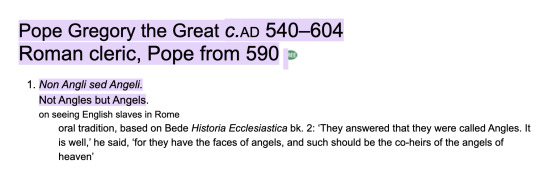
Oxford reference essential quotations
It comes from a historical account of the pope walking through a market in Rome, and seeing some exotic slave children (i.e. fair hair and blue eyes, and light skin) from what is now the England, and asking where they were from. The master replied that they were "Angles" (Angli in latin) and the pope declared them to be "Angels" (Angeli) instead, which, in latin at that time would have been a pun. This history from Bede actually influenced a lot of the christian world, so we could conceivably make the point that fair blonde and blue eyed angels comes from the idea that they looked liked the English (who were not christian, but pagan at the time of being newly conquered). Aziraphale's looks in the originsl Good Omens are probably a direct result of the lineage in art of this 1,500 year old pun.



Depictions of angels, 1100 years apart Which raises the question: if Shax is asking for the Angel Gabriel with her note, the pun doesn't make any fucking sense.
Jon Hamm plays Gabriel as an "American", specifically not English like the rest of the cast. He does have blue eyes, but as far as Shax is concerned, Gabriel's eyes are violet, not really a human colour. Shax could just actually be stupid (I guess?) and not realize that in modern English that constitutes a mistake (boring), or that Americans succeeded in 1776 (hilarious). But here's a quirkier theory: Shax knows what she's talking about, and she's gunning for Maggie. If you look really closely, demons show up and start hanging around the street earlier in the ball than you would guess. Once a fair number have amassed, they stay waiting for Shax to lead them. However, even though she hasn't shown up yet, they eagerly chase Maggie down the street from her shop. They're only stopped by Crowley, and Maggie gets safely into the ball.

Once inside, she has quite a stunning change of costume, highlighting her blonde hair and blue eyes:

There's so much more evidence to suggest that Maggie isn't really a normal human, but this post is long enough. What I will say is that it's subtle, but once the demon attack really gets going (no thanks to Maggie), Shax and the other demons never look for Jim once, even when he leaves the mezzanine. They concentrate all their efforts on Aziraphale, Maggie and Nina, and never mention Gabriel again.
While Maggie is a Scottish name, and she clearly has some links to Scotland if a random pub in Edinburgh is buying records from her in Soho, she does have a distinctly English accent, and lest we forget...

———————————————
thanks as always to @embracing-the-ineffable and @thebluestgreen for the tasty links and sounding board.
#good omens meta#good omens 2#art director talks good omens#go season 2#go meta#good omens season two#good omens season 2#good omens#go2#good omens prime#nina and maggie#anthony j crowley#jimbriel#crowley x aziraphale
89 notes
·
View notes
